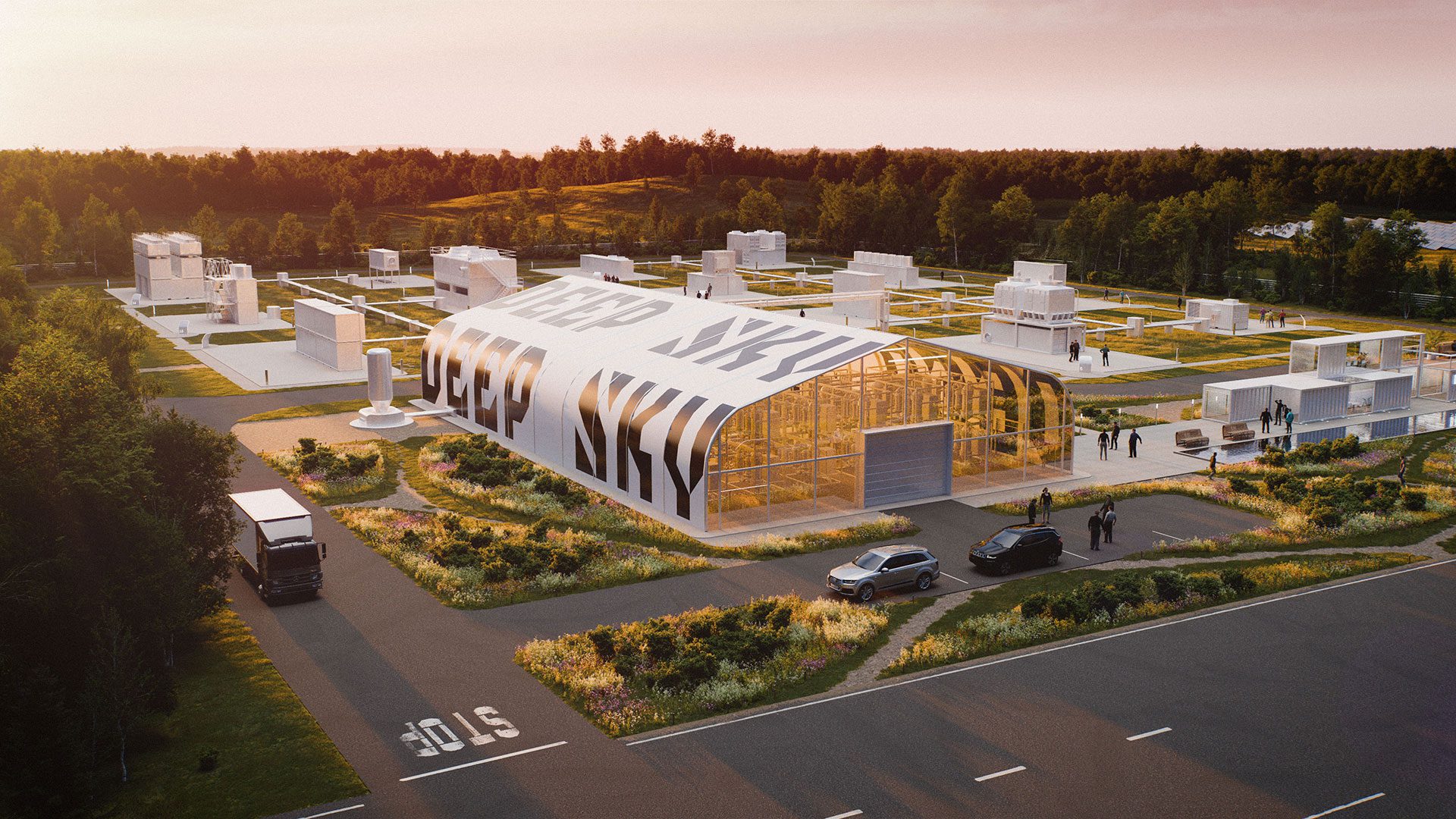
The direct air capture industry just hit a milestone that could reshape where carbon removal happens. Mission Zero Technologies has successfully deployed their first DAC system designed to operate in sub-zero temperatures at Deep Sky Labs in Alberta, Canada. This isn't just another plant installation, it's proof that modular DAC can work anywhere, even in the harshest climates.
While most DAC discussions focus on massive industrial hubs in warm regions, this development signals a shift toward distributed, climate-resilient systems that could unlock carbon removal potential across previously unsuitable geographies. The implications extend far beyond a single plant, potentially opening up vast northern territories for large-scale carbon capture operations.
>> RELATED: Deep Sky Completes Construction of Alpha, World’s First Cross-Technology Carbon Removal Centre
From Lab to Sub-Zero Reality
Mission Zero Technologies, the London-based startup behind the UK's first commercial DAC plant, began delivering their third modular system to Deep Sky's innovation center in Innisfail, Alberta in October 2024. The electrochemical system can recover up to 250 tonnes of CO2 annually, powered entirely by renewable solar energy with permanent underground storage.
What makes this deployment groundbreaking isn't just the cold weather capability. It's the speed and adaptability of the modular approach that allowed the system to progress from contract to delivery in just 12 months. This rapid deployment timeline demonstrates how modular DAC could accelerate global carbon removal efforts compared to traditional mega-projects that can take years to develop.
The sub-zero operation capability fundamentally expands DAC's geographic reach. Canada alone has massive renewable energy resources and geological storage potential that were previously considered too climatically challenging for DAC deployment. Now those constraints are lifting.
Key Performance Metrics
- Capacity: 250 tonnes CO2 annually per modular unit
- Deployment speed: Contract to installation in 12 months
- Cost reduction: Over 60% reduction compared to first deployment
- Operating conditions: First DAC system designed for sub-zero temperatures
- Power source: 100% renewable solar energy
Modular vs. Mega: The Scale Strategy Shift
The traditional DAC narrative has centered on building massive centralized facilities, but Mission Zero's approach flips that script. Their modular platform uses existing mature carbon technologies and established supply chains, allowing for deployment anywhere without the infrastructure requirements of mega-plants. Each system sources components from different suppliers, supporting local economies while maintaining cost efficiency.
This strategy addresses one of DAC's biggest commercialization challenges: the chicken-and-egg problem of needing massive infrastructure investments before proving market viability. Modular systems can demonstrate real-world performance and generate revenue streams while scaling up gradually. The data from this Alberta installation will feed into optimization efforts that have already achieved a 60% cost reduction compared to Mission Zero's first Sheffield deployment.

"Deep Sky Labs, as a project validating some of the best startups in the DAC industry, is a vital milestone for the carbon removal industry. It will show that DAC tech, when done effectively, is commercially viable and an essential tool in our fight against the climate crisis."
Dr. Nicholas Chadwick, Co-founder and CEO, Mission Zero Technologies
Opening Arctic Opportunities
The ability to operate in sub-zero conditions could be transformative for carbon removal geography. Northern Canada, Alaska, Scandinavia, and Siberia all offer abundant renewable energy resources, geological storage capacity, and vast land availability. Until now, these regions have been largely written off for DAC deployment due to climate concerns.
Deep Sky's vision extends well beyond this pilot project. The organization aims to remove between 100,000 and one million tonnes of CO2 annually once operations scale from pilot to commercial deployment. With $75 million in funding from investors including Investissement Québec and OMERS Ventures, they're positioning Canada as a major carbon removal hub.
The timing aligns with Canada's massive renewable energy expansion plans and federal policies supporting carbon removal technologies. Mission Zero's sub-zero capability could enable distributed DAC networks across Canada's northern territories, taking advantage of cheap hydroelectric power and excellent geological storage formations.

>> In Other News: CDR Market Shows Record Growth in First Half of 2025
Data-Driven Optimization
Beyond geographic expansion, this deployment represents a critical data collection opportunity. Mission Zero is building a comprehensive database of real-world performance across different climates, industrial environments, and use cases. This operational data is essential for rapid technology optimization and financial confidence from investors and policymakers.
The company's three installations to date, spanning the UK and now Canada, provide performance data across different applications: sustainable aviation fuel production, carbon-negative building materials, and permanent geological storage. This diversity of use cases strengthens the commercial viability case for modular DAC technology.

"Mission Zero is a pioneer, establishing a modularized DAC technology that is projected to reduce both energy consumption and cost. We look forward to deploying their tech as we scale to gigatons of carbon removal to reverse global warming in Canada."
Damien Steel, Former-CEO, Deep Sky
Racing Toward Commercial Scale
The successful deployment of climate-resilient modular DAC represents more than technological achievement. It's proof that carbon removal can adapt to diverse environments and scale rapidly without massive upfront infrastructure investments. As Mission Zero continues collecting operational data and optimizing costs, the modular approach could become the dominant DAC deployment strategy.
With backing from Breakthrough Energy Ventures, the XPRIZE Foundation, and the UK Government, Mission Zero has moved from lab to commercial operation in under three years. Their sub-zero breakthrough could accelerate global DAC adoption by making previously unsuitable regions viable for carbon removal operations.
The carbon removal industry is watching closely. If modular, climate-resilient DAC can prove commercial viability across diverse conditions, it could unlock the distributed deployment model needed to reach gigaton-scale carbon removal. For an industry racing against climate deadlines, that adaptability might be the key to global impact.
Subscribe to the newsletter
Daily decarbonization data and news delivered to your inbox
Follow the money flow of climate, technology, and energy investments to uncover new opportunities and jobs.
Latest issues
-
The Three-Continent Move That Redefines SAF
Wishing everyone a restful holiday season.🎄🎅🎁 Inside this Issue ✈️ Cathay Goes Global With SAF in Three-Continent Fuel Deal 🧪 Proton Ventures Partners With Barents Blue For Realization Of The Bar...
-
Can One Truck Fix Hydrogen’s Biggest Problem?
Inside This Issue 🚛 Alberta's Shared Truck Model Could Crack Hydrogen Adoption ✈️ ZeroAvia Completes Financing Round 🌾 Frontier And NULIFE Scale New Biowaste Carbon Removal Approach 🔥 WAGABOX® Of ...
-
North America’s Carbon Removal Year in Review: Winners, Losers, Surprises
Inside This Issue 🌎 North America's Carbon Removal Year in Review: The Deals, Policies, and Milestones That Shaped 2025 🚢 Hapag-Lloyd And North Sea Container Line Win ZEMBA Second E-Fuel Tender 🪨 ...
Company Announcements
-
ClimeFi Announces New 85,000 Tonne Procurement Round
In its latest procurement round, ClimeFi has enabled more than US$18m in durable carbon removal purchases across eight removal pathways: Biochar, Bioenergy with Carbon Capture and Storage (BECCS), ...
-
Vallourec, a world leader in premium seamless tubular solutions, and Geostock, a global specialist in underground storage of energy, have signed a Memorandum of Understanding (MoU) to strengthen th...
-
CMA CGM, DHL Step Up Ocean Freight Decarbonization with Biofuel Deal
DHL Global Forwarding and shipping group CMA CGM have agreed to jointly use 8,990 metric tons of second-generation biofuel to reduce emissions from ocean freight. The initiative is expected to cut...
-
Next-Generation Gas Turbine Control System For Thermal Power Plants Completes Functional Testing
Integration of Mitsubishi Power's control technology with Mitsubishi Electric's high-speed data processing technology Supports rapid load adjustments and diverse fuels including hydrogen Tokyo, ...